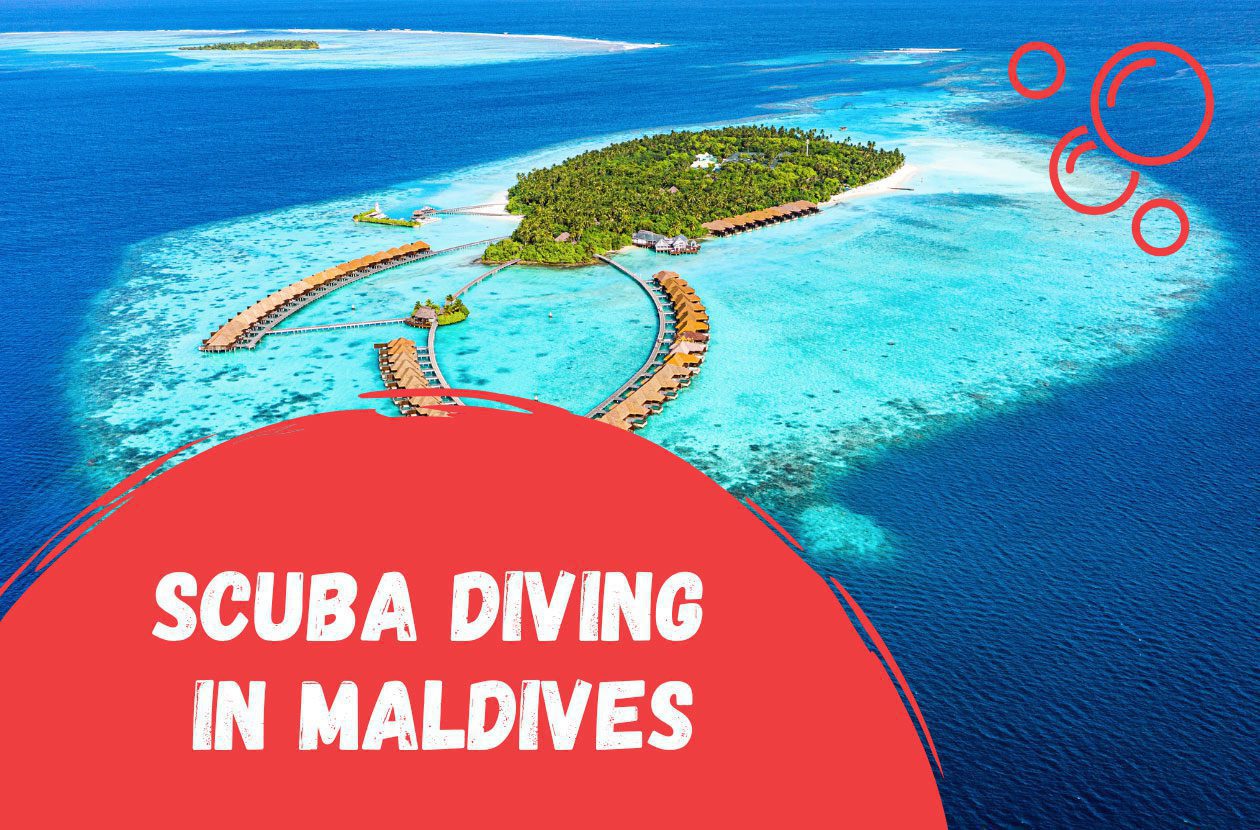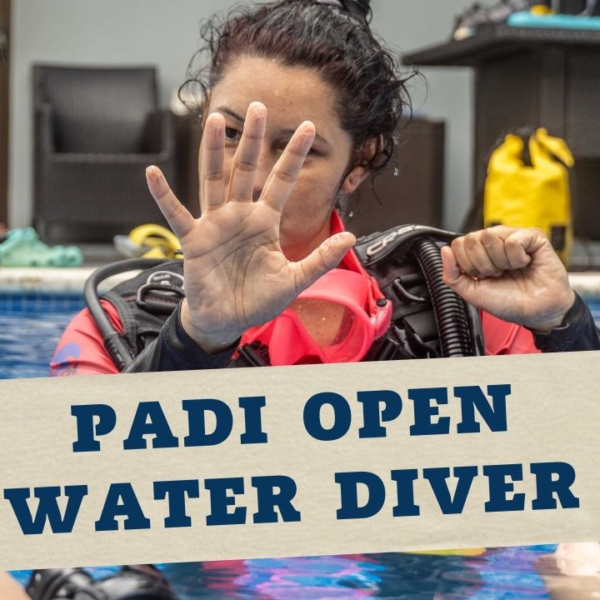Scuba diving in the Maldives is considered one of the most attractive in the world. The Maldives is called a diver’s paradise for good reason. The republic includes 26 atolls where we will be able to explore ancient wrecks, deep caves, beautiful coral reefs and hundreds of marine animals.
Such a diving prospect is certainly every diver’s dream. So let’s see what to expect from diving in the Maldives and whether it’s worth going on such a trip. In this article You’ll find all neccesary information about scuba diving in Maldives.
Table of Contents
Best scuba diving in Maldives
The Maldives is considered a very exclusive destination in every respect, and diving here can also be considered very attractive. However, this does not mean that you can only go on such a trip with a fat wallet. There are places available for an average budget and you can also experience affordable diving. However, let’s start with the basics.
Geographical location
The Maldives, or more precisely the Republic of Maldives (capital Male) is an island country located in the Indian Ocean. The country is divided into 26 natural atolls, which form 1190 small islands. Accessible transportation between the islands is usually by boat or hydroplane. The climate here is equatorial, which means that diving is possible all year round.
Marine life of the Maldives
Probably everyone who goes diving in the Maldives has two things in mind: manta rays and whale sharks.
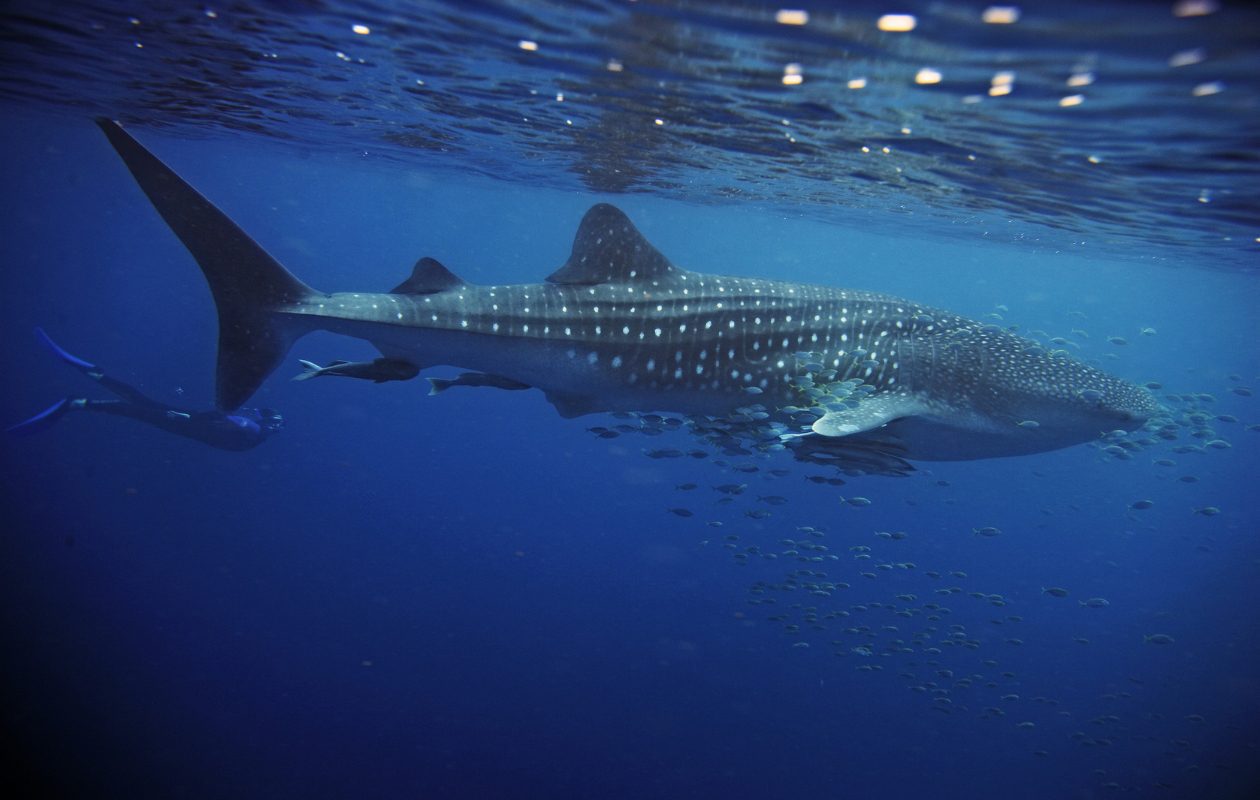
The Maldives is home to the world’s largest population of reef stingrays (Manta alfredi). It is estimated that there are between 5,000 and 7,000 of them.
Whale sharks
The presence of so many whale sharks (Rhincodon typus) in the archipelago is a scientific mystery that remains unsolved. A population of whale sharks (the largest fish in the world), consisting of 95% immature males, appears to inhabit the archipelago and is the subject of photo-identification-based studies. So far, more than 200 whale sharks have been identified and are regularly seen. They can usually be seen south of Alifu Dhaalu Atoll (also known as Ari Atoll). During the southwest monsoon, they can also be seen in Hanifaru waters, where they share a feeding system with manta rays, which feed similarly to whale sharks through filtration.
One thing is for sure, diving in the Maldives is a true delight for many different species, each offering rare encounters and leaving unforgettable memories.
Sharks
(Grey Reef, Whitetip, Nurse, Thresher, Hammerhead, Tiger, Silvertip and many others) may appear daily in the currents and sometimes, though less frequently, depending on the species, elsewhere in the archipelago. They will often be accompanied by tuna, barracuda, napoleons and sometimes even sailfish.
There is also no lack of smaller marine life, and those who admire these smaller species will see many creatures that we would normally expect to see elsewhere in the world. Ghost Pipefish, Harlequin Rasbora and Halimeda hide discreetly among the coral waiting to be discovered by divers, the same goes for Leaf Fish and Frogfish. It is also quite common to discover magnificent species of Nudibranchs and Flatworms, many of which are widely distributed in the region.
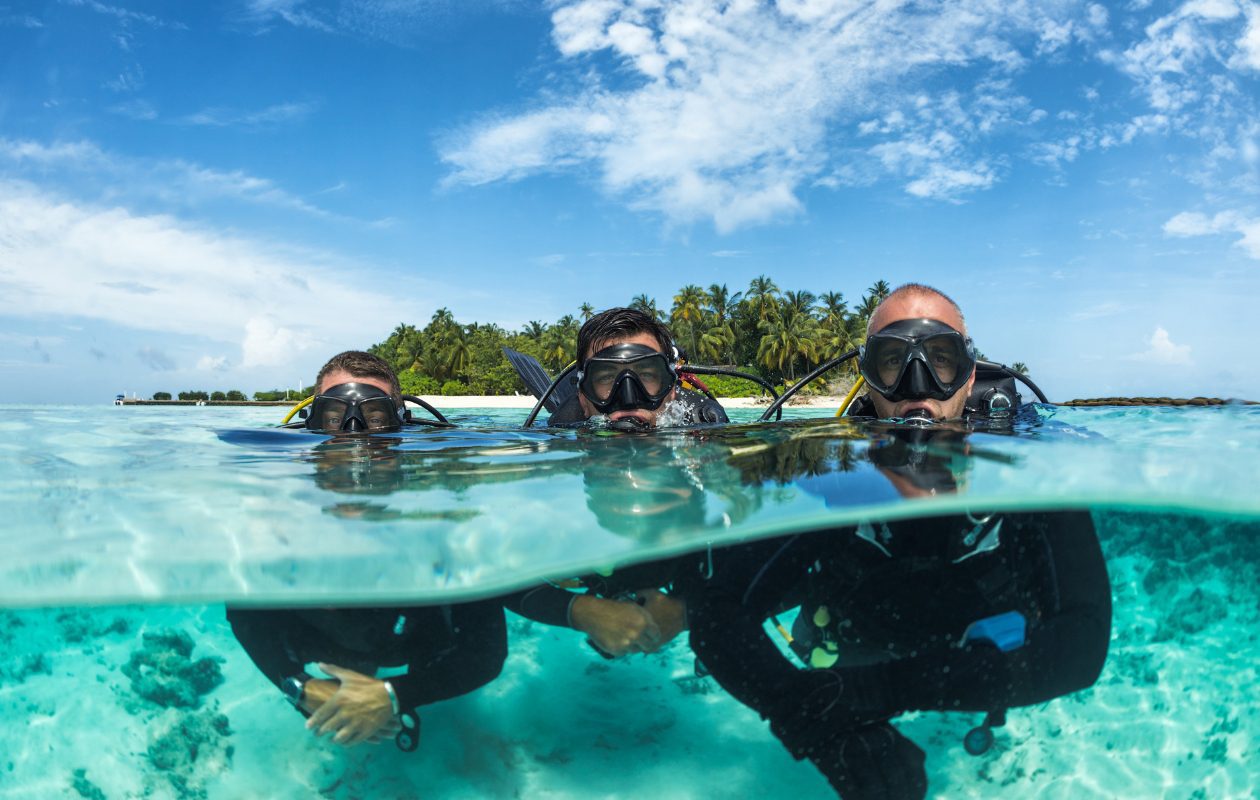
Thousands of species have made the Maldives their home, and once you experience the underwater adventures it offers, you will have plenty memories of amazing and magical dives left behind.
Dive sites in the Maldives
Addu Atoll – Addu town
Located in the southern part of the Maldives, the atoll is a pristine place that will provide us with entertainment and a unique underwater world. Some of the most interesting places to visit are Manta Point, Makadu outsider and Royalty British.
Mudakan called Manta Point
Thanks to strong currents, we can see moving schools of Mantas and sharks. Most impressive is the number and size of these animals. Manta’s fin span reaches up to 7. meters in length.
Makadu outsider – diving outside the atoll
On Makadu we can see a beautiful coral reef, and the variety of reef fish additionally enhances the view. It’s as if we are looking at a small underwater city, and in it thousands of creatures with colors we have never seen before. In addition to the coral garden, we can also see turtles and manta rays. However, we have to be careful, because there are also predators swimming around the reef.
Royalty British – The largest wreck in the Maldives.
Diving inside the atoll, we can admire the Royalty British cargo ship, which sank in 1946. Covered with coral, it has become home to small as well as large fish that are not afraid to come as close as they can.
Vaavu Atoll – Felidhu Atholhu
An atoll that includes the atolls of Felidhu and Vattaru, with Felidhoo as its capital. Attractions such as the Big shark channel and night diving in Alimathaa will be found on this island.
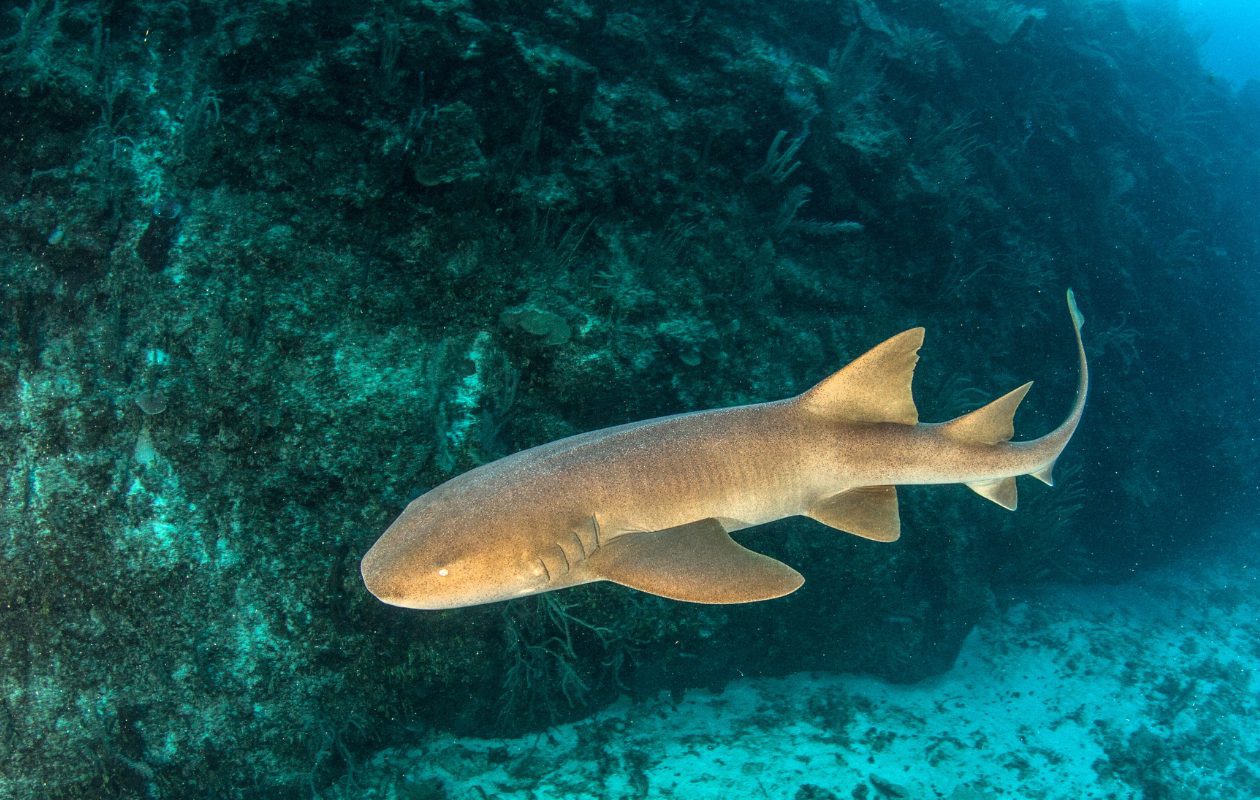
Bodu Miyaru Kandu – Big shark channel
One of the most beautiful dive sites in the Maldives. We can see a canyon about 30 meters deep, as well as small caves and numerous overhangs. However, we will be most impressed by the schools of gray sharks, as well as whitetip sharks and tunas. We will be able to swim among Napoleon’s varans or manta rays and admire the colorful reef fish. The site is ideal for photographers.
Alimathaa – night diving
Thanks to the feeding of fish by the Alimathaa resort, we will see countless numbers of nurse sharks in this place. Some of the specimens can measure up to 3 meters in length, which makes the sight of these creatures at night even more impressive.
Male Atoll
Consisting of two parts (south and north), Male Atoll is the most visited atoll of all. We will be able to admire the banana-shaped coral reef and the 100-meter Singaporean cargo ship.
Banana Reef (Banana Reef)
By its unique shape, it is one of the most popular attractions among divers. Located in the North Atoll, Banana Reef will surprise us with a large number of corals and large groups of moray eels. Near the reef we can discover deep caves and unique rock overhangs.
Victory Wreck
100-meter Singaporean cargo ship is an 80-meter cargo ship that sank in 1981 in North Malé Atoll sailing from Singapore with goods destined for island resorts. Typically, the dives begin and end at the ship’s main mast. During the ascent, we can enjoy a beautiful panoramic view of the ship, so that when the safety stop is over, we don’t feel like leaving the water.
The wreck is best dived from late May to July. The water is warm and there are small ripples.
The site has gained its fondness due to the large number of macro creatures. We will see here: Needlefish, nudibranch snails and blowfish. The home of all these animals is the reef located at the ships front. And the number of these creatures makes it quite a challenge to see the entire wreck.
Best scuba diving in Maldives – let’s recap
As you can see, the Maldives has a lot to offer for any diver, regardless of their diving experience. If you have the opportunity to take a trip to the Maldives then you should definitely take it, because as I mentioned at the beginning it is a unique place.





